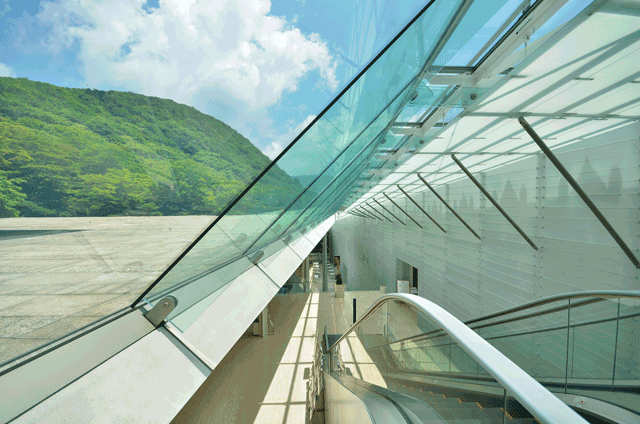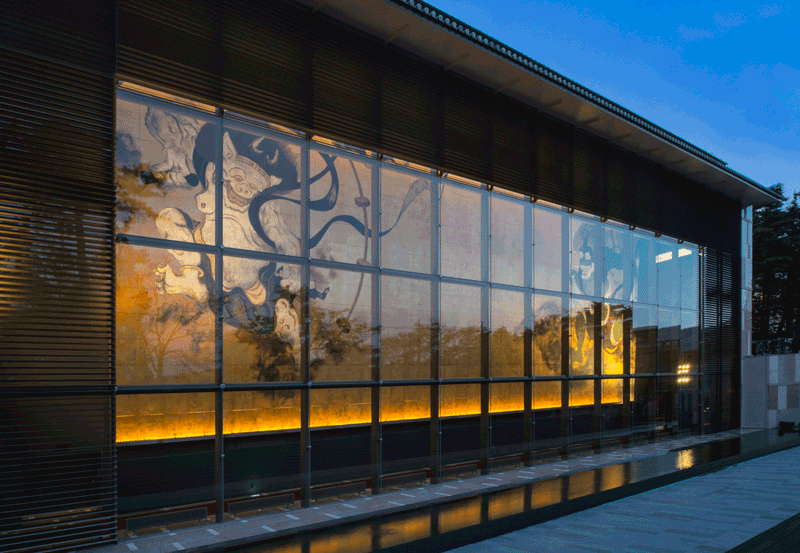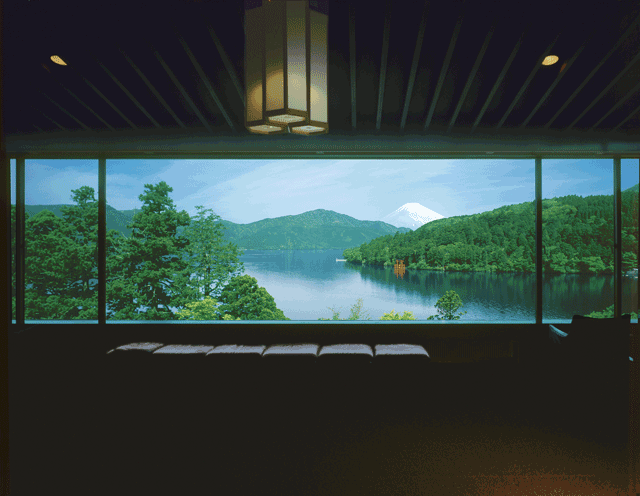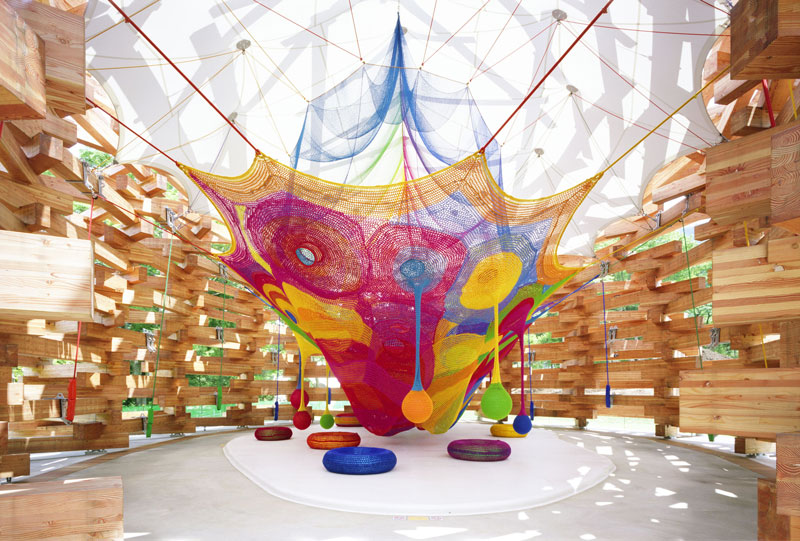Hakone is a popular and relatively accessible weekend destination for many Tokyoites. While tourism has noticeably slowed down during the Covid-19 pandemic, this town remains one of our favorite locations for a quick and socially distant getaway. With many open on a reservation basis, museums are one of the few places you can ensure a safe and fun activity to do outside of the four walls of your Tokyo apartment. If you are planning a short vacation, a staycation or a workation near or in Hakone, here are some of our favorite museums to keep in mind.
1. Okada Museum of Art
The Okada Museum of Art opened in 2013 and has made public an abundance of Japanese and Eastern cultural treasures from the personal collection of Kazuo Okada, which includes early-modern Japanese paintings, East Asian ceramics and Buddhist sacred statues dating back to the 11th century. Okada’s lifetime of passionate and discerning collecting has led to an impressive cross-section of Japanese art history that focuses exclusively on works created in Japan or passed down within Japan through the years, housed in a streamlined modern building that nevertheless fits perfectly into its natural surroundings.
One luxury of the site, and easily the museum’s brightest highlight, is the singular experience of contemporary, Japanese painter Kotaro Fukui’s magnificent mural, Wind/Time. In a resounding echo of Tawaraya Sotatsu’s Wind God and Thunder God Screens (found in the Kennin-ji Temple, Kyoto), Fukui’s mural measures 12 meters high and 30 meters wide and is best viewed from the on-site foot bath, where you can soak your feet in natural hot springs while enjoying a beverage from the café.
Further complementing the natural surroundings are the museum’s 15,000 square meters of gardens interwoven with streams and plant life, as well as a traditional Japanese restaurant overlooking a tranquil koi pond. Complementary boots and umbrellas are readily available, in case of rain, which somehow seems to enhance the garden’s beauty.
Okada Museum of Art is a wonderful experience for those new to Japanese art—for whom it can serve as a primer or an overview—as well as those who feel they’ve seen it all. The expansive collection maintains its foundation of classic works and traditional ceramics, while also introducing newer and different works through temporary exhibitions. It’s an opportunity to deepen your knowledge of the true Japan, through art and nature.
2. Narukawa Museum of Art
Nestled in the low hills beside Hakone’s Lake Ashi, the Narukawa Museum is surrounded by a landscape as stunning as the works that are housed inside. Within the walls of this lakeside museum is a treasure trove of modern nihonga, a traditional form of Japanese-style painting. The museum was opened in 1988 by founder Minoru Narukawa, as a home for his personal collection of these works, which use ingredients and techniques that have been refined for centuries, but whose subject matter belies a distinctly modern sensibility.
In explaining the appeal of the museum’s most prized “picture,” Narukawa uses a phrase that comes from the world of Japanese gardening—shakkei. Literally, it means “borrowed landscape,” and it refers to the way that natural scenery is used as the background for a garden: “I haven’t seen a museum that uses the landscape the same way that we use ours, and I simply believe that any visitor who comes to Hakone—or Japan for that matter—needs to see it.” And it would have been hard to choose a better location. In addition to the art that hangs on the museum walls, one of the most inspiring images that the Narukawa Museum has on offer can be seen from the 50-meter-wide Panorama Lounge (main image, above). On clear days, visitors can look out past Lake Ashi, past the hills and mountains of Hakone, and on the snow-capped peak of Mount Fuji, framed in a unique manner that reveals and displays Japan’s most celebrated mountain at the same time.
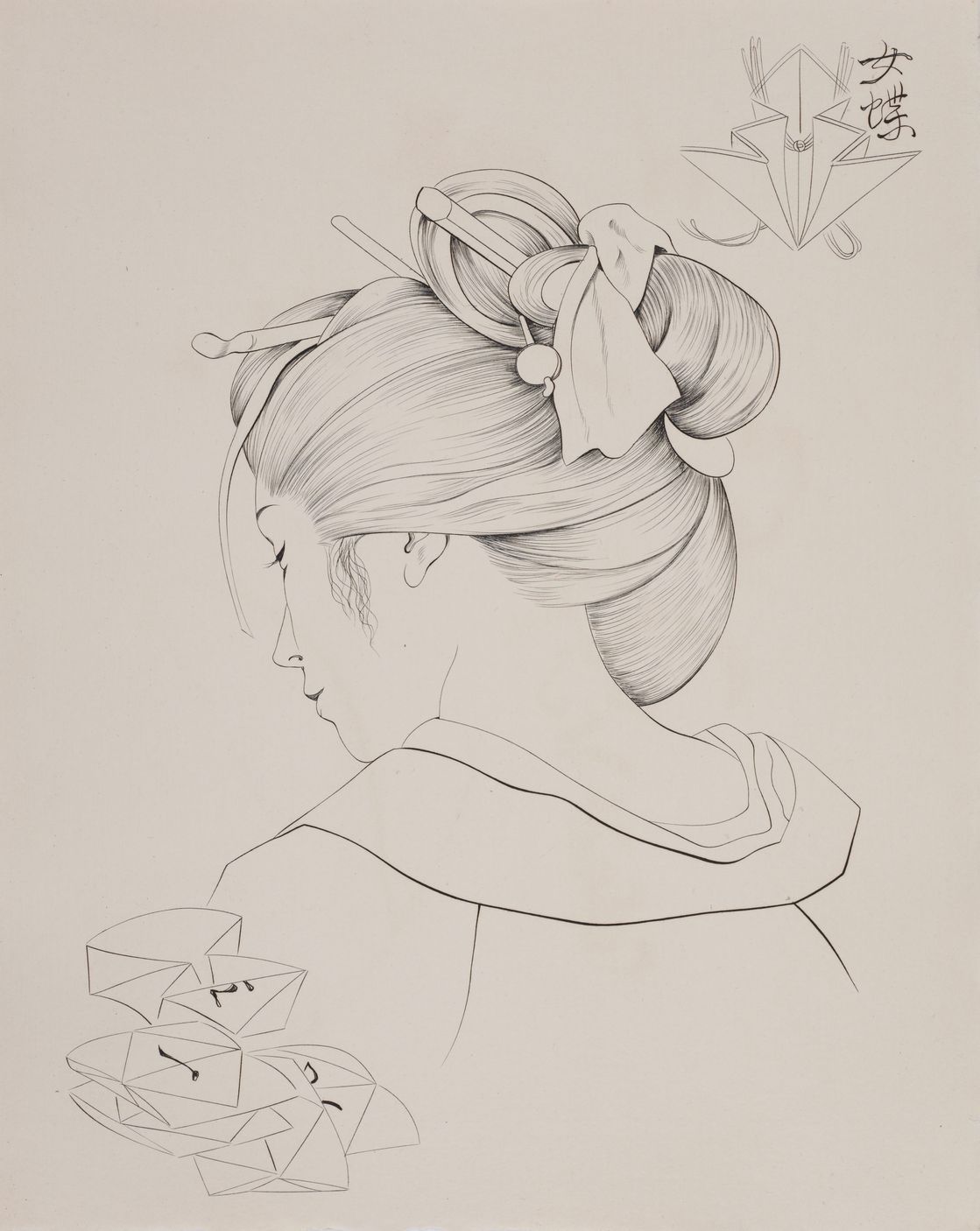
Léonard Foujita, Dragon of Seas, (Jean Cocteau), 1955, Burin on paper (Second half of the exhibition) © Fondation Foujita / ADAGP, Paris & JASPAR, Tokyo, 2014 D0701
3. The Pola Museum
As you stand inside the sleek, ultramodern architecture of the Pola Museum, you feel like you were right in the heart of the city. But in fact, this building’s contemporary design is nestled within the belly of a forested hillside and offers a unique mix of fine art and natural beauty, all in a light, airy space.
The building itself, opened in 2002, is an architectural gem. Designed by the renowned Koichi Yasuda, the Pola Museum features clean, pure lines that provide a contrast with the natural forms of the rural surroundings. Although much of the space is actually underground, it’s difficult to tell: a combination of natural light and advanced fiber optics creates a luminous atmosphere that puts the varied collection of the museum in perfect light. The building was designed with the concept of being “a symbiosis between Hakone’s natural beauty and the works of art,” and true to this concept, the museum grounds offer a walking course that is open during the warmer months.
As you make your way around the airy spaces of the Pola Museum’s galleries, you can look on masterpieces of modern and contemporary artists from Europe and Asia—the collection includes nearly 10,000 pieces and ranges from Ming Dynasty vases to surrealist canvases by Salvador Dalí. Highlights of the museum include works by Impressionists Monet and Renoir; paintings, sculptures, and other objects that mark stages in the career of the mercurial creator, Pablo Picasso.
To take a breather as you make your way around the museum, there are two restaurants that offer two different dining experiences. For a more filling meal, you can go with the restaurant “Array,” which features authentic European fare and massive picture windows that look out on Hakone’s mountainous landscape. For lighter appetites, drop in on the Tune Café and soak in the forested surroundings that offer different views throughout the year. While Hakone is known as a popular tourist destination, a visit to the Pola Museum of Art provides visitors with an experience that combines natural scenery with modern design and refined art with the rolling hills and valleys of the region.
4. Hakone Open-Air Museum
As a visit to the Hakone Open-Air Museum can show you, art isn’t something that needs to be kept inside. The spacious 70,000 square meter park was opened in 1969, with the intention of creating a space where guests of all ages could explore and experience art in a unique setting throughout the entire year.
The expansive sculpture garden offers surprises around every corner, with pieces that portray both profound philosophical truths and whimsical flights of fancy, executed in a great variety of styles. And always in the background, while you make your way through the many small paths that cross the museum’s outdoor garden, you will find yourself surrounded by Hakone’s hills and mountains, serving as a natural counterpoint to art sculpted by human hands.
The Hakone Open-Air Museum is a short walk from the Chokoku-no-mori Station on the Hakone Tozan Railway, making it a destination that can be easily reached from Tokyo for a day trip, or part of a longer stay in the area.
This article was originally posted in December 2014 with Sarah Custen and Alex Jordan as contributors. It has been updated and reposted by TW Staff in February 2021.
Updated On December 26, 2022

